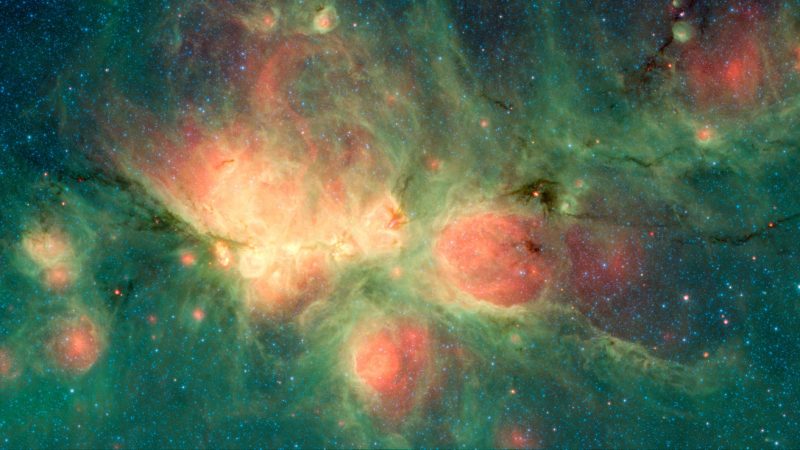In vast star-forming clouds across the universe, an invisible interaction between gravity and magnetism is controlling the birth of new stars. And scientists have just traced this interaction in detail for the first time.
The researchers said on October 8, 2025, that they’ve studied magnetic fields in 17 star-forming regions. They found the first evidence that gravity overpowers and realigns the magnetic fields in these dust clouds, helping to tip a delicate balance toward star birth.
The research team used Chile’s ALMA telescope – a vast array of 66 high-precision radio antennae – for their observations. They published their peer-reviewed research on October 8, 2025, in The Astrophysical Journal.
A complex star-forming balance
Stars form from vast clouds of gas and dust, sometimes referred to as stellar nurseries. Gravity is the driving force behind this process, pulling matter together until it becomes so dense and hot that nuclear fusion ignites, and a star is born.
But gravity isn’t the only force at work here. If nothing was opposing gravity, stars would form much faster and more frequently than we observe. So what’s slowing the process down?
The answer, scientists believe, is magnetism. Magnetic fields running through these gas clouds are thought to form barriers that push back against the force of gravity, slowing the collapse of gas and dust.
For decades, astronomers have debated just how much of a dominant role magnetic fields play in this process. And now, we finally have data to show how this wrestle between gravity and magnetism plays out.
Tracking invisible forces
The researchers examined 17 star-forming regions in the Cat’s Paw nebula, around 5,500 light-years away. Specifically, they were measuring how the directions of magnetic fields change at different distances from clumps of collapsing matter.
They found that far away from these star-forming clumps, magnetic fields tend to be perpendicular (at a right angle) to the direction of gravity. That means these fields are fighting against gravity and obstructing the movement of material inward.
But closer to the cores of these clumps, it’s a different story. Here, they found that magnetic fields tend to be parallel with the direction of gravity. So, in these denser regions, gravity is strong enough to force the magnetic fields into alignment with the infalling gas and dust.
And without magnetism keeping it in check, gravity can funnel more material inward, bringing the star’s birth ever nearer.

Star-forming clouds in detail
To make these detections, the astronomers used the Atacama Large Millimeter/submillimeter Array (ALMA): a network of 66 radio antennas high in the Chilean Andes.
This telescope allowed them to study the huge star-forming regions at scales of just a few thousand astronomical units, or a few thousand times the distance between Earth and the sun.
Lead author Qizhou Zhang of the Center for Astrophysics | Harvard & Smithsonian said:
With ALMA’s extraordinary sensitivity and resolution, we can now probe these cosmic birthplaces in unprecedented detail.
We see that gravity actually reorients the magnetic field as clouds collapse, offering new clues about how massive stars – and the clusters they inhabit – emerge from the interstellar medium.
Bottom line: For the first time, scientists have traced how magnetic fields in star-forming clouds interact with gravity to control the birth of new stars.
Via National Radio Astronomy Observatory
Ancient outer solar system had a weak magnetic field
Creepy sound of Earth’s magnetic field flip: Listen here!
